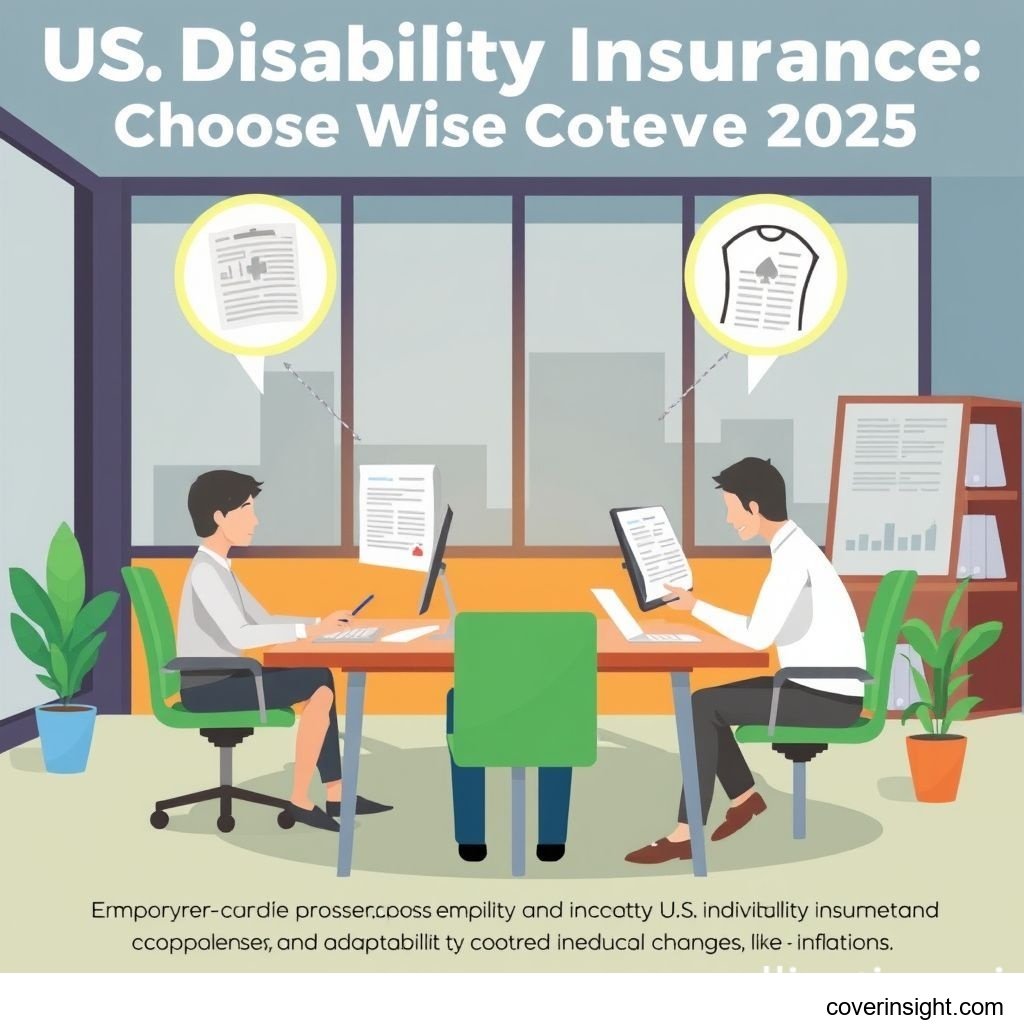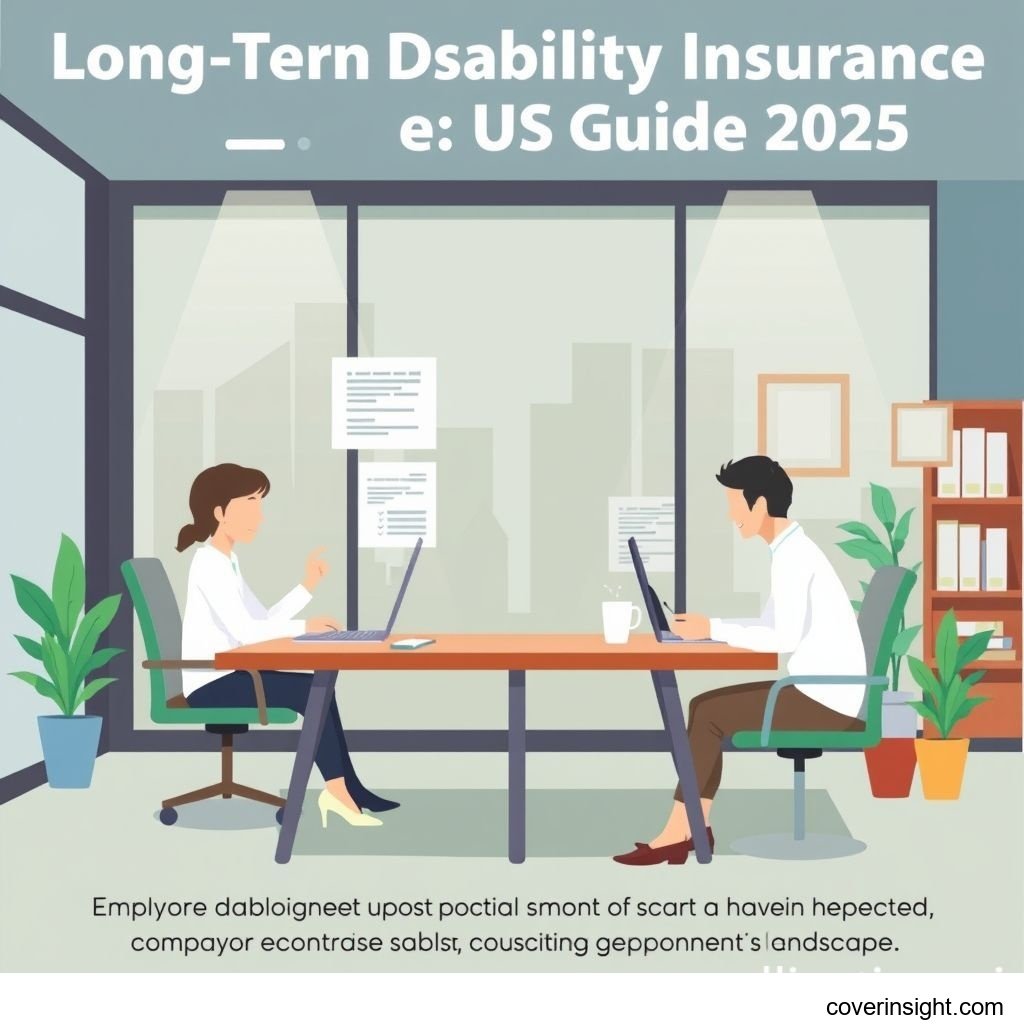Introduction
As we look towards 2025, the landscape of personal finance in the US continues to evolve, significantly influenced by cost of living adjustments. These annual shifts, which impact everything from Social Security benefits to everyday expenses, underscore the critical importance of robust financial planning. In an unpredictable world, ensuring your income is protected, even if you can't work, isn't just a smart move—it’s often a necessity for maintaining stability. This guide aims to help you navigate the complexities of US disability insurance, empowering you to choose wise coverage that offers peace of mind.
Coverage Details
Understanding what your disability insurance policy covers, and perhaps more importantly, what it doesn't, is the bedrock of wise coverage. It's not just about having a policy; it's about having the right policy for your unique circumstances.
What’s Included
Most disability insurance policies are designed to replace a portion of your income if you become unable to work due to illness or injury. Typically, this replacement benefit is between 60% and 80% of your pre-disability earnings. Policies often feature a "waiting period" (also known as an elimination period) before benefits kick in, usually ranging from 30 to 180 days. Once approved, benefits are paid out for a predetermined "benefit period," which can range from a few years to retirement age. Many policies also offer optional riders, such as a Cost of Living Adjustment (COLA) rider, which increases your benefits annually to keep pace with inflation, ensuring your purchasing power doesn't erode over time. For more general insights into financial protection, you might find valuable information at Insurance Resources Global.
Common Exclusions
While disability insurance offers a vital safety net, it's crucial to be aware of what typically isn't covered. Common exclusions often include disabilities resulting from pre-existing conditions not disclosed during the application, self-inflicted injuries, acts of war, or participation in illegal activities. Normal pregnancy, while it may result in time off work, is usually not covered unless complications arise that genuinely prevent you from working. It’s always best to thoroughly review the policy document to understand all specific exclusions, ensuring there are no unpleasant surprises down the road.
Cost Analysis
The cost of disability insurance can feel like a moving target, but by understanding the factors at play and knowing a few smart saving tips, you can secure essential coverage without breaking the bank.
Price Factors
Several key factors influence the premium you'll pay for disability insurance. Your age and health status are paramount; younger, healthier individuals generally pay lower premiums. Your occupation also plays a significant role – a desk job typically carries a lower risk and thus a lower premium than a physically demanding job. The benefit amount (how much income you want to replace), the benefit period (how long you want to receive payments), and the waiting period you choose all directly impact the cost. A shorter waiting period or a longer benefit period will naturally result in higher premiums. Riders, like the aforementioned COLA rider or an own-occupation rider (which defines disability more broadly), will also add to the overall price.
Saving Tips
Looking to cut down on costs without sacrificing essential protection? Consider opting for a longer waiting period; extending it from 30 to 90 or 180 days can significantly reduce your premiums, assuming you have an emergency fund to cover initial expenses. Choosing a shorter benefit period (e.g., 5 years instead of until age 65) can also lower costs, though it does mean less long-term protection. If available, group disability insurance through your employer or a professional association is often more affordable than individual policies. Maintaining a healthy lifestyle can also pay off, as insurers reward lower health risks. Finally, always get quotes from multiple providers and compare them side-by-side to ensure you're getting the best value. For comprehensive information and tools to compare various insurance options, the National Association of Insurance Commissioners is an excellent resource.
FAQs
How does cost of living adjustment (COLA) affect disability benefits? A COLA rider on a disability insurance policy ensures that your monthly benefit payments increase over time, typically annually, to keep pace with inflation. This helps maintain your purchasing power, preventing your benefits from eroding due to rising costs of living. Without a COLA rider, your benefit amount would remain fixed, which could be a struggle down the line.
What affects premiums? Premiums are primarily affected by your age, health status, occupation, chosen benefit amount, benefit period, and waiting period. Additional riders, like COLA or own-occupation, will also increase the cost.
Is it mandatory? No, disability insurance is not mandatory in the US, unlike auto insurance in many states. However, while it might not be required by law, it's certainly a vital component of a robust financial plan, providing a safety net if unforeseen health issues arise. Many employers offer short-term or long-term disability as a benefit, but individual policies offer more tailored coverage.
How to choose? Choosing the right policy involves assessing your financial needs, current savings, potential lost income, and risk tolerance. Consider how much income you need to replace, how long you can afford to wait for benefits, and your budget for premiums. Speaking with a financial advisor or an insurance professional can also help clarify your options. For more general guidance on making informed health and financial decisions, you can visit Healthcare.gov.
Consequences of no coverage? Going without disability insurance can leave you financially vulnerable. Without it, if you become disabled and can't work, you'd likely rely on personal savings, family support, or government programs like Social Security Disability Insurance (SSDI). However, SSDI has strict eligibility requirements, a long application process, and benefits are often modest. According to data from the Council for Disability Awareness, roughly one in four of today’s 20-year-olds will become disabled before reaching age 67. Imagine Sarah, a marketing professional in Colorado, who suffered a sudden stroke at 40. She didn't have private disability insurance, assuming her good health would carry her through. While she qualified for SSDI, the payments were significantly less than her previous income, and the five-month waiting period meant depleting her modest savings. Her recovery was prolonged, and without adequate income replacement, she eventually had to downsize her home and heavily rely on her family for support. This scenario highlights how easily a significant medical event can derail even the most carefully planned finances if this crucial safety net isn't in place. You can also contact your State Insurance Departments for specific information and consumer protection resources in your area. For more information tailored to the US market, exploring US Insurance Home might also prove useful.
Author Insight & Experience: Based on my experience living in the US and navigating personal finance, it's easy to overlook disability insurance until you or someone you know faces an unexpected health crisis. We often insure our cars and homes, yet our ability to earn an income—our greatest asset—is frequently left unprotected. I've witnessed firsthand how a sudden illness or accident can turn someone's world upside down, not just physically and emotionally, but financially too. It's a stark reminder that life can throw curveballs, and while we hope for the best, preparing for the worst isn't about being pessimistic; it's about being pragmatic and responsible. Taking the time now to understand and secure adequate disability coverage is truly a gift you give to your future self and your loved ones.







Comments